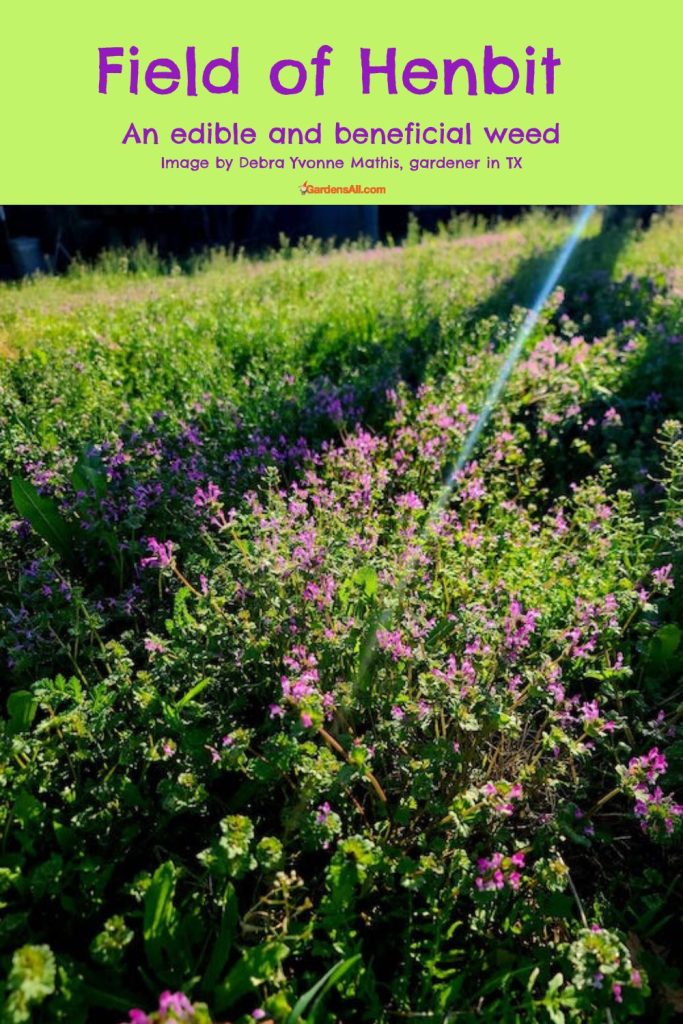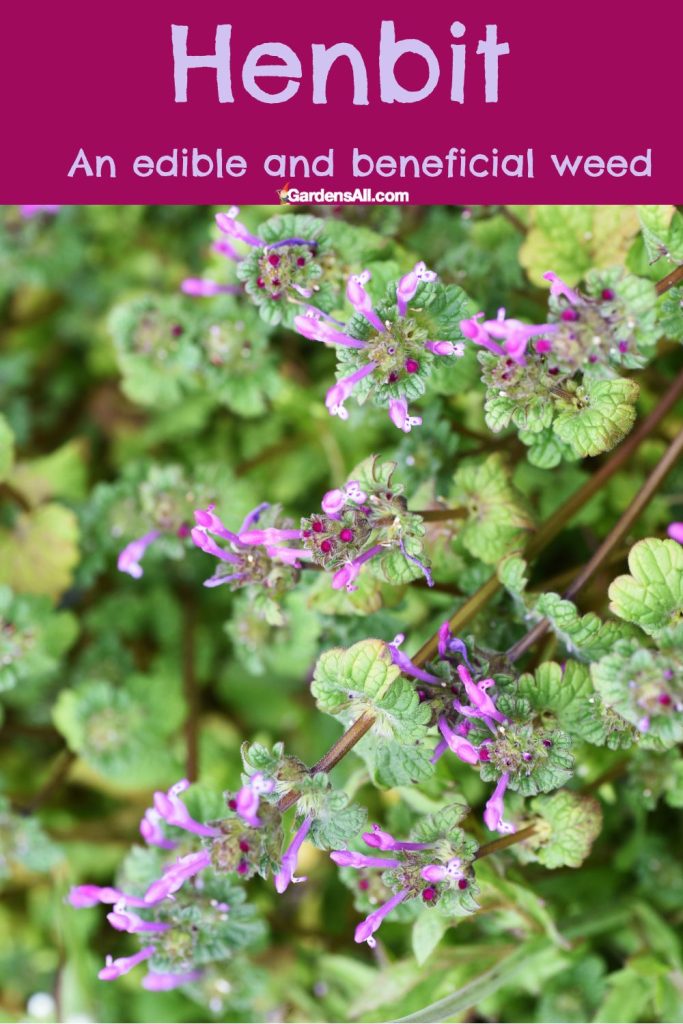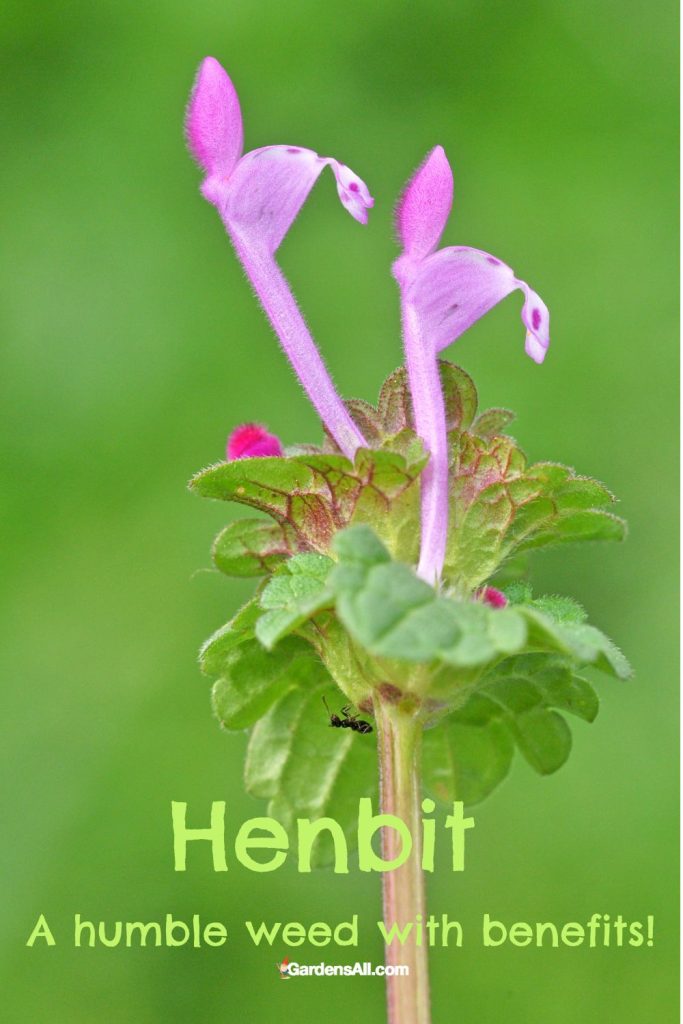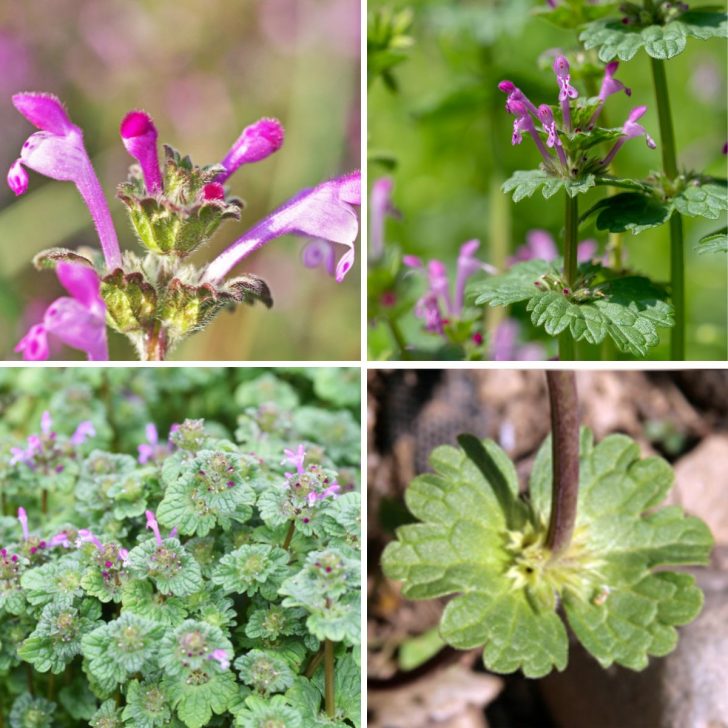It’s worth taking a bit of time to get to know about the unpretentious little mint weed henbit with delicate purple flowers. There are folklore and proven benefits to henbit, for raw or cooked, the leaves, stems and flowers are all edible.
Tea is an easy favorite way to enjoy henbit benefits. This is a mild herb that can fit in with most other herbal concoctions.
Like some of the other edible weeds, this humble early spring weed with purple flowers is often considered to be a nuisance to a pristine lawn. In fact, while henbit has proven beneficial edible and medicinal properties, most people search online for the weed henbit in order to learn how to kill it!
If that’s you, before you do, you may want to give it a second glance and a chance to serve you by discovering the gifts it has in store for you.
About Henbit (Lamium amplexicaule)
If you like the details…
- Scientific Name: Lamium amplexicaule
- Common Names:
- Henbit
- Henbit Deadnettle
- Deadnettle (henbit is often confused for Purple Deadnettle (L. purpureum)
- Greater Henbit
- Family: mint (lamiaceae)
- Flowers: tiny pink, purple and lavender tubular flowers that bloom in spring and sometimes in fall in some zones
- Invasive: grows aggressively, but is not as invasive as the similar looking Creeping Charlie
- Parts Used: leaves, flowers and stems
- Edible: raw, cooked, or as tea; tastes mildly sweet, peppery and earthy and has been likened to celery.
- Habitat: shady or mostly shady yards, urban areas, open areas, lawns, cultivated fields, pastures, along roadsides
- Season: winter to early spring annual or biennial
- Nutrients vitamins, iron, antioxidants

Henbit Benefits and Uses
Henbit (Lamium amplexicaule) is a flowering plant commonly found in fields, meadows, and disturbed areas. It has a long history of use in traditional medicine and is also an edible plant.
This late winter / early spring bloomer, is a healing tonic for people and provides an early source of pollinator flowers for bees and hummingbirds.
Henbit is a great first food source for bees. It has both pollen and nectar. The pollen is a bright red. Very interesting plant!
Shannon Schofield, beekeeper, homesteader, poet & writer
See Shannon’s articles on: Lessons from the Garden, and How to Make Honeysuckle Blossom Jelly.
Edible Benefits and Uses of Henbit
- Culinary Uses: The leaves and flowers of henbit are edible and can be used in salads or as a garnish, much as you would adding in other edible herbs and plants such as plantain or these other weeds with purple flowers. They have a mild, slightly minty flavor.
- raw
- cooked
- dried of fresh for tea, hot or cold
- Nutritional Value: Lamium amplexicaule is a good source of vitamins and minerals, including vitamins A and C, iron, and calcium.
- Herbal Tea: Dried henbit leaves can be used to make a tea that is said to have a soothing effect on the stomach and can help with coughs and colds.

Medicinal Benefits and Uses of Henbit
Some of the many benefits claimed for Lamium amplexicaule include traditional remedies and folk medicine as well as scientifically validated results.
For example, anecdotally, Henbit is of the Lamium genus, which is in the mint family all of which have known benefits, though some are more potent than others.
Henbit is used in folk medicine for many ailments, some of which have also been validated through scientific studies.
For health benefits, plants of the Lamium genus have found widespread applications in folk medicine thanks to the large presence of chemical compounds that constitute effective active ingredients in many situations of therapeutic interest.
The Mint Family — Lamium Genus Traditional Health Benefits Include:
Many cultures have used the Lamium genus of mint plants in folk medicine as antispasmodic, astringent, anti-proliferative, anti-inflammatory, antimicrobial, antioxidant and antiviral.[1]https://www.ncbi.nlm.nih.gov/pmc/articles/PMC8270304/
Mint plants are also used to help regulate sebaceous secretions, and as well as for the treatment of hypertension, scrofula, paralysis, prostate, menorrhagia, uterine hemorrhage, leucorrhea, trauma, and fractures.[2]https://www.ncbi.nlm.nih.gov/pmc/articles/PMC6571824/#B52-molecules-24-01913
Trans-phytol is an abundant component of the essential oil of several Lamiaceae species and functions as mitochondrial antioxidants.
Some Scientific Studies and Lore on Lamium Amplexicaule Benefits
This is just a sampling toward helping you identify henbit benefits that might be worth pursuing.
- Antibacterial Properties: Studies have shown that henbit has antibacterial properties and can help fight infections.[3]https://www.researchgate.net/publication/262919857_Antimicrobial_and_Antioxidant_Properties_of_Lamium_galactophyllum_Boiss_Reuter_L-macrodon_Boiss_Huet_and_L-amplexicaule_from_Turkish_Flora[4]https://www.mdpi.com/2076-3417/10/19/6808
- Anti-Inflammatory Properties: Henbit has anti-inflammatory properties and has been used to treat a range of inflammatory conditions, including arthritis and gout.[5]https://www.ncbi.nlm.nih.gov/pmc/articles/PMC6571824/
- Antimicrobial: Three compounds shown to have antibacterial properties.[6] … Continue reading[7]https://www.researchgate.net/publication/262919857_Antimicrobial_and_Antioxidant_Properties_of_Lamium_galactophyllum_Boiss_Reuter_L-macrodon_Boiss_Huet_and_L-amplexicaule_from_Turkish_Flora
- Antispasmodic – may reduce muscle spasms and cramps. [8]https://www.ncbi.nlm.nih.gov/pmc/articles/PMC6571824/#B52-molecules-24-01913
- Digestive Health: The tea made from henbit leaves can help soothe digestive problems such as bloating, indigestion, and gas.
- Immune system support: Henbit tea may help to support the immune system due to its high levels of antioxidants and anti-inflammatory compounds. (See the compounds chart a little further below).
- Respiratory Conditions: Henbit is a member of the lamiaceae family of mints, which have been used in traditional medicine to treat respiratory conditions such as coughs, colds, and asthma.[9]https://academicjournals.org/journal/JMPR/article-abstract/6B9ACE970324
- Rheumatism / Joints – Sometimes fresh leaves of L. amplexicaule are crushed to form a paste and applied topically to swollen joints to ease swelling and pain.[10]https://www.ncbi.nlm.nih.gov/pmc/articles/PMC6571824/#B82-molecules-24-01913
- Wound Healing: Poultices made from henbit leaves can be applied topically to wounds to help promote healing.[11]https://www.ncbi.nlm.nih.gov/pmc/articles/PMC6571824/#B82-molecules-24-01913
It’s important to note that while studies may show promising results, further research is needed to fully understand the medicinal benefits and potential side effects of this or any wild plant. As always, it’s best to consult with a healthcare professional for medicinal purposes.
Henbit Tea Benefits
Most of the healthful properties of any herb, will infuse its nutrients into tea, so you can reference the above list of henbit benefits to glean potential uses.
It’s rare to find per serving nutrient information for teas, and similarly, rare to find scientific studies on the nutrient profile of herbal teas. Likely because there isn’t much (or any) funding covering medicinal properties of weeds that people can access for free.
Our perspective on consuming herbal teas is that it’s akin to a homemade “vitamin water”, or healing tonic.
While it may not be proven, it’s easy to logic that drinking a cup or glass of herb-infused water for daily micro infusions of medicinal properties, adds up over time toward our overall health and wellbeing. Plus it helps us to consume more water, so both are beneficial.
Wild Edibles Safety Tips
- Be sure that you have positively identified your plant before eating it.
- Avoid harvesting from areas that have been sprayed with herbicides or lawn fertilizers. They can be difficult to completely wash off.
- As you’ve just learned, wild edibles can be very nutrient dense, so much so that your body may not be accustomed to their richness. To avoid a tummy ache, start by eating small amounts, and work your way up to normal sized servings.
There you have it. Take a walk around your yard or surrounding wild areas (not affected by lawn chemicals or road pollution), and see if you can find a bit of this quietly pretty little herb to try.[12]https://www.ncbi.nlm.nih.gov/pmc/articles/PMC6571824/

Henbit (Lamium amplexicaule) Compounds
| Compound | Percentage | Benefits |
|---|---|---|
| Trans-phytol | 44.8% | Antioxidant properties, used in vitamin E synthesis |
| Octadecanol | 12.0% | Emollient, used in cosmetics for its moisturizing properties |
| Hexadecanoic acid (Palmitic acid) | 11.8% | Used as a soap ingredient, emollient |
| Hexahydrofarnesyl acetone | 10.6% | Fragrance in cosmetics, potential antioxidant |
| Germacrene D | 18.5–34.9% | Antimicrobial, anti-inflammatory properties |
| (E)-caryophyllene | 2.5–11.9% | Anti-inflammatory, analgesic, and anxiolytic effects |
| α-Pinene | 2.2–16.2% | Anti-inflammatory, bronchodilator, antimicrobial |
| β-Pinene | 2.0–10.6% | Anti-inflammatory, antimicrobial |
| 1-Octen-3-ol | 3.5–8.0% | Mushroom-like aroma, used in flavorings |
| Trans-chrysanthenyl acetate | 41.1% | Fragrance component, potential anti-inflammatory properties |
| Camphor | 18.1% | Topical analgesic, anti-inflammatory, antimicrobial |
| Isophytol | 14.8% | Potential antioxidant, used in vitamin E synthesis |
| 9,12,15-Octadecanoic acid methyl ester | 19.2% | Emollient, used in cosmetics and personal care products |
| 6,10,14-Trimethyl-2-pentadecanone | 8.0% | Fragrance ingredient, potential antimicrobial |
| Dibutyl phthalate | 6.1% | Used as a plasticizer, not recommended due to health concerns |
| Nonacosane | 5.5% | Used in cosmetics, potential skin conditioning agent |
| Nonyl phenol | 3.2% | Industrial chemical, limited use in consumer products due to toxicity concerns |
| Imedazol and pyrimidene | NA | Not enough data for specific benefits |
Identification and Benefits of Henbit Video
In this video filmed in Pilot Mt., NC, herbalist, Elizabeth Morgan, of DandelionSoap.com, talks about henbit identification and benefits.
We are an online gardening publication sharing all things garden related! Including urban farming, family gardening, homesteading, gardening for profits, and more. We’re all about growth!
References

